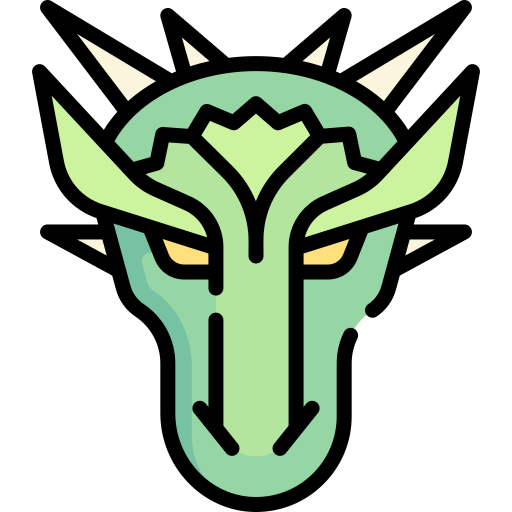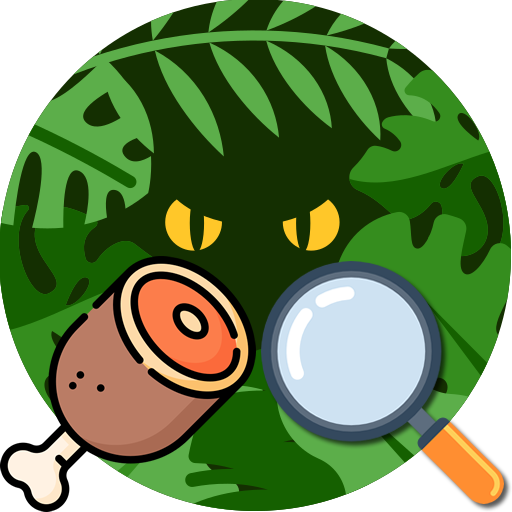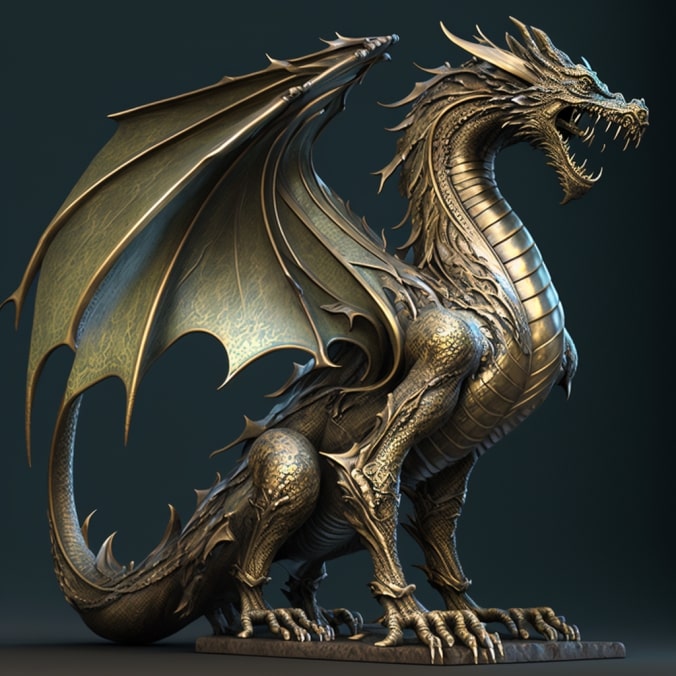 Abilities:
Abilities:-
Ancient Bronze Dragon Breath - Lightning
-
Repulsion Breath Weapon (60)
-
Legendary Defenses
-
 Spellcasting |
Spellcasting |
-
 |
Speak with Animals
|
Speak with Animals
-
 |
Beast Eyes
Detect Thoughts
|
Beast Eyes
Detect Thoughts
-
 |
Lightning Bolt
|
Lightning Bolt
-
 |
Control Water
|
Control Water
-
 |
Chain Lightning
Disintegrate
Heroes' Feast
Phased Dispersion
|
Chain Lightning
Disintegrate
Heroes' Feast
Phased Dispersion
-
 |
Furious Vortex
Group Teleport
|
Furious Vortex
Group Teleport
 Lair:
Lair:-
Bronze Dragon Lair
 Monster Bits:
Monster Bits:-
3600 Animal Bone0.03 gp
-
6750 Animal Fat0.5 gp
-
13500 Animal Meat0.05 gp
-
3150 Dragon Blood10 gp
-
4500 Hard Skin0.1 gp
-
5400 Bronze Dragon Scale25 gp
Verdant verdigris adorns the massive dragon, its wing membranes gleaming with a brilliant bronze sheen, catching and refracting light. Jaws more fearsome than a crocodile contrast with scales around its eyes, crinkled in an air of unexpected good humor. A captivating blend of ferocity and charm defines this majestic creature.
🕰️ Age & Experience
Ancient dragons are the eldest of their kind, often having lived for thousands of years. With centuries of observation, conquest, and introspection behind them, they are master tacticians, wielding wisdom and patience far beyond mortal comprehension. Every word, move, and gaze carries the weight of ages.
💪 Size & Strength
These titans of the sky dwarf even their adult kin—some spanning over 100 feet in length. Their bodies are fortified with impenetrable scales, bone-crushing muscles, and wings that blot out the sun. Few creatures can match the raw physical power of an ancient dragon.
🔮 Magical Prowess
Ancient dragons are walking arcane storms. They possess immense magical capabilities, able to:
- Cast high-tier spells effortlessly
- Shape reality within their domain
- Wield natural magical resistances
- Enchant their lairs and manipulate the surrounding terrain
- Their power extends far beyond breath weapons—magic is woven into their very being.
🗺️ Territory & Influence
An ancient dragon's domain can span entire kingdoms. Their influence warps the natural world:
- Rivers change course
- Weather patterns shift
- Predator-prey relationships evolve around them
- Creatures within their realm either serve, flee, or hide—none remain unaffected.
💰 Treasure Hoards
Few things are more legendary than the hoard of an ancient dragon. Amassed over centuries, these caches include:
- Mountains of gold and gems
- Lost magical artifacts
- Relics from fallen civilizations
- Such wealth draws adventurers, kings, and fools alike—often to their doom.
🧠 Behavior & Personality
No two ancient dragons are alike. Some are ruthless tyrants, others reclusive sages. Their personalities reflect lifetimes of victory, betrayal, solitude, and ambition. Every action is calculated, every word layered with meaning. Whether benevolent or cruel, they are always dangerously intelligent.
🛐 Cultural Significance
To many, ancient dragons are living gods. They feature prominently in:
- Religious doctrine
- Creation myths
- Prophecies and legends
- Entire cultures have risen and fallen under their gaze. Their names are spoken with awe, fear, or reverence.
🏯 Lair & Defenses
An ancient dragon’s lair is a fortress of nature and magic. Nestled in remote, often impossible-to-reach places—like the peak of a storm-shrouded mountain or the bottom of a sunken abyss—these sanctuaries are protected by:
- Deadly traps
- Magical wards
- Loyal minions or enslaved guardians
- Entering such a place is often a death sentence.
🧬 Interactions with Other Races
While many dragons isolate themselves, some negotiate, manipulate, or dominate mortal civilizations. They may:
- Forge alliances with powerful rulers
- Demand tribute from cities
- Wage war for dominance
- These relationships are rarely simple—and often driven by a dragon’s own inscrutable goals.
🪦 Lifespan & Legacy
Ancient dragons may eventually succumb to age or battle, but their influence endures. They leave behind:
- Enduring legends and myths
- Enchanted relics
- Descendants carrying on their will
- Even in death, their name can shape nations or ignite wars.
🗡️ A Living Force of Legend
Ancient dragons are more than creatures—they are forces of history, myth, and magic. As foes, they challenge the gods; as allies, they reshape destinies. To encounter one is to witness the full weight of age, power, and legend bound in scale and flame.
-
 Speed:
Speed:
-
 Walking Speed:
+40
Walking Speed:
+40
-
 Flying Speed:
+80
Flying Speed:
+80
 Special Senses:
Special Senses:-
 Nightsight: +120
Nightsight: +120
-
 Blindsight: +60
Blindsight: +60
-
 Truesight: +60
Truesight: +60
 Immune to Status Effect:
Immune to Status Effect:-
 Frightened
Frightened
 Natural Armor:
Natural Armor:-
Natural Armor +120 gp
 Natural Weapon(s):
Natural Weapon(s):-
Bite (20) (3d10)
-
Claw (15) (3d6)
-
Tail (25) (3d8)
 Extra Attack: +5
Extra Attack: +5
 Abilities:
Abilities:-
Major Wing Whirlwind
 Quick Abilities:
Quick Abilities:-
Legendary Detection
 Free Abilities:
Free Abilities:-
Frightful Presence
 Skill Tier 2:
Skill Tier 2:-
 Common Language Skill
Common Language Skill -
 Draconic Language Skill
Draconic Language Skill
 Skill Tier 11:
Skill Tier 11:-
 Bending Weapon Skill
Bending Weapon Skill -
 Empathy
Empathy -
 Influence
Influence -
 Inspection
Inspection -
 Natural Armor Skill
Natural Armor Skill -
 Natural Weapon Skill
Natural Weapon Skill
 Skill Tier 13:
Skill Tier 13:-
 Attention
Attention -
 Fortitude
Fortitude -
 Frighten
Frighten -
 Sneak
Sneak -
 Willpower
Willpower
🌊 The Valorous Bronze Dragon
Noble and inquisitive, bronze dragons are the stalwart guardians of coastal realms, thriving where the sea meets the shore. These majestic creatures sustain themselves on aquatic flora and fish, but their true passions lie in observing the world’s denizens and championing just causes. With a fascination for warfare and a knack for shapeshifting into friendly beasts, bronze dragons blend curiosity with courage, making them both protectors and scholars of the lands they roam.
🐬 Sleek and Seafaring Form
A bronze dragon’s head is a striking blend of grace and power, defined by a ribbed, fluted crest that sweeps back like ocean waves. Elegant, curving horns jut from the crest, mirrored by sharp spines that adorn its lower jaw and chin, giving it a regal yet approachable demeanor. Its smooth, streamlined scales and webbed feet make it a master of the seas, gliding through water with the ease of a dolphin. A bronze wyrmling’s scales shimmer with a yellow-green hue, like sunlight on shallow waves, but as it matures, they deepen into a rich, lustrous bronze that gleams with a metallic sheen. In old age, its pupils fade, transforming its eyes into glowing orbs of verdant green that pulse with wisdom and resolve.
⚔️ Champions of Justice
Bronze dragons are driven by a deep sense of duty, eagerly joining forces with armies or heroes fighting for righteous causes. Their fascination with warfare is not born of bloodlust but of a desire to understand strategy and protect the innocent. They study battles with a scholar’s eye, offering tactical insights or bolstering morale with their inspiring presence. When not engaged in combat, they patrol their coastal domains, ensuring that tyranny and oppression find no foothold. Their commitment to justice is unwavering, and they are known to challenge pirates, slavers, or any who prey on the vulnerable with relentless ferocity.
🦒 Masters of Observation
Bronze dragons possess a boundless curiosity for the creatures around them, often shapeshifting into friendly animals—such as playful otters, loyal hounds, or soaring seabirds—to observe without drawing attention. In these guises, they mingle with coastal communities, eavesdropping on sailors’ tales or watching merchants haggle, all to better understand the pulse of the world. They are particularly drawn to humanoids, whose ambition and diversity fascinate them, and they may spend years in disguise, forming subtle bonds with those they admire. Unlike their silver kin, bronze dragons rarely form lasting friendships, preferring to remain detached observers who intervene only when justice demands it.
🌴 Coastal Custodians
Bronze dragons make their homes along vibrant coastlines, where cliffs rise from sandy shores and coral reefs teem with life. They are attuned to the rhythms of the sea, diving to harvest kelp and fish or basking on rocky outcrops under the sun’s warmth. Their presence fosters abundance, as their magic subtly enriches the waters, ensuring bountiful catches for nearby villages. They are fiercely protective of their domains, driving off interlopers like blue dragons or sahuagin with storms of lightning breath and powerful claws. Their lairs are often adorned with seashells, driftwood, and other ocean treasures, arranged to reflect their love of the natural world.
💍 Treasures of the Tides
A bronze dragon’s hoard is a celebration of the sea and the cultures that thrive along its edges. They prize pearls, coral carvings, and gemstones like emeralds and aquamarines that capture the ocean’s hues. Their collections include relics of maritime history—ship figureheads, navigational instruments, and enchanted tridents—as well as artifacts of fallen coastal empires. Unlike other dragons, bronze dragons value items for their stories as much as their shine, often trading lesser treasures to sailors or scholars in exchange for tales of distant lands. Their hoards are hidden in submerged caves or cliffside vaults, guarded by currents and magical wards that deter thieves.
🏝️ A Bronze Dragon’s Lair
Bronze dragons carve their lairs in the heart of coastal beauty—sea caves accessible only by diving through churning waves, cliffside hollows carved by centuries of tides, or sunken ruins reclaimed by coral. These sanctuaries are bathed in the scent of salt and seaweed, with walls that shimmer with phosphorescent algae or embedded shells. Skylights or high openings allow sunlight to dance across the interior, illuminating treasures and creating pools of warm light where the dragon rests. The lair’s layout is both defensive and aesthetic, with twisting tunnels and elevated perches that offer views of the sea and sky.
A legendary bronze dragon’s magic infuses its lair with the power of the ocean, summoning gentle tides to conceal entrances or fierce storms to repel intruders. The air hums with the faint crackle of electricity, a reminder of the dragon’s lightning breath. Foes who enter face treacherous footing on slick rocks or sudden surges of water, while the dragon strikes from above or emerges from hidden pools, its movements as fluid as the waves themselves.
🛡️ Sentinels of Shore and Storm
Bronze dragons are the embodiment of valor and vigilance, their lives a balance of quiet observation and bold action. They are not as sociable as brass dragons nor as aloof as gold dragons, striking a unique chord as both warriors and watchers. Their commitment to justice makes them invaluable allies, but their independence ensures they act on their own terms. To earn a bronze dragon’s aid is to gain a partner whose lightning splits the sky and whose heart burns for the greater good. To face one in battle is to challenge a tempest, its wrath as unyielding as the tides that shape the shore.
-
 Speed:
Speed:
-
 Swimming Speed:
[speed_walking]
Swimming Speed:
[speed_walking]
 Damage Type Immunity:
Damage Type Immunity:-
 Lightning
Lightning
 Creature Type Monster Bits:
Creature Type Monster Bits:-
0.12 Bronze Dragon Scale25 gp
 Passive Abilities:
Passive Abilities:-
Amphibious1000 gp
Environment:
![]()
🛡️ The Exalted Metallic Dragons
Metallic dragons are the epitome of draconic nobility, their shimmering scales and virtuous hearts setting them apart from the malevolent chromatic dragons. These majestic beings embody wisdom, compassion, and a profound commitment to the greater good, weaving their influence into the tapestry of the world with grace and purpose.
🌟 Guardians of Harmony
Metallic dragons are radiant beacons of benevolence, viewing themselves as stewards of balance in a world teeming with diversity. They champion harmonious coexistence, recognizing the intrinsic value of every creature, from the humblest villager to the mightiest giant. Unlike their chromatic kin, who sow discord, metallic dragons strive to nurture peace and protect the delicate equilibrium of life. Their actions are guided by a deep-seated belief that all beings have a role in the grand design, and they intervene—sometimes subtly, sometimes with awe-inspiring might—to ensure this harmony endures.
📜 Curators of History
While metallic dragons share the draconic love of treasure, their hoards are not mere piles of wealth but meticulously curated archives of history and culture. Each item—be it an ancient coin, a hero’s blade, or a tome of forgotten lore—holds a story, preserved to enrich the world’s collective memory. They collect relics not for greed but to safeguard the past, ensuring that the triumphs, tragedies, and wisdom of bygone eras are never lost. Some metallic dragons also hoard dangerous artifacts, locking them away to prevent their misuse, their lairs serving as both museum and vault. This reverence for legacy makes them unparalleled repositories of knowledge, sought by scholars and adventurers alike.
⚖️ Protectors of the Greater Good
Metallic dragons are not swayed by avarice, but their attachment to their hoards is profound, rooted in their role as custodians. They part with treasures only when convinced that doing so serves a noble cause—such as thwarting a rising evil or aiding a worthy hero. Convincing a metallic dragon to relinquish an item is a test of diplomacy, requiring petitioners to appeal to the dragon’s sense of duty and align their goals with the greater good. These encounters often spark moral dilemmas, as adventurers must prove their intentions are pure, lest they face the dragon’s discerning judgment.
🦋 Solitary Shapeshifters
Among their most captivating traits, metallic dragons possess the ability to shapeshift into humanoids or beasts, blending seamlessly into the world’s myriad cultures. As a kindly merchant, a wandering bard, or a gentle forest creature, they immerse themselves in the lives of others, savoring local customs, cuisines, and stories. This practice not only sates their boundless curiosity but also deepens their understanding of the world they protect. Some metallic dragons spend decades in disguise, forging subtle connections with communities or observing the ebb and flow of civilizations. Their shapeshifting is both a tool for learning and a means of safeguarding their privacy, allowing them to act as unseen guardians or enigmatic allies.
🧬 Custodians of Ancient Memories
With lifespans stretching across millennia, metallic dragons possess memories as vast as the skies they soar. They recall every encounter, triumph, and betrayal with crystalline clarity, their perspectives shaped by centuries of interactions. Remarkably, they can identify bloodlines by scent, tracing lineage through generations to honor ancient debts or settle old grudges. A metallic dragon might greet a hero with warmth, recognizing the blood of a long-ago friend, or confront a villain with icy disdain, sensing the taint of an ancestor’s treachery. These connections create rich dynamics, turning encounters into moments of revelation where the past and present collide.
🌍 Pillars of Wisdom and Wonder
In a campaign, metallic dragons are more than creatures—they are catalysts for profound storytelling. Encounters with these guardians of goodness offer opportunities for moral quandaries, quests for ancient knowledge, or tests of diplomatic finesse. Whether players seek to earn a dragon’s favor, uncover the secrets of its hoard, or enlist its aid against a looming threat, metallic dragons bring depth and gravitas to any adventure. Their lairs, often hidden in majestic locales—cloud-wreathed peaks, coastal cliffs, or sunlit canyons—are stages for awe-inspiring moments, where the weight of history and the promise of heroism converge. To engage with a metallic dragon is to touch the soul of the world, forging legends that echo through the ages.
 Abilities:
Abilities:-
Change Shape
